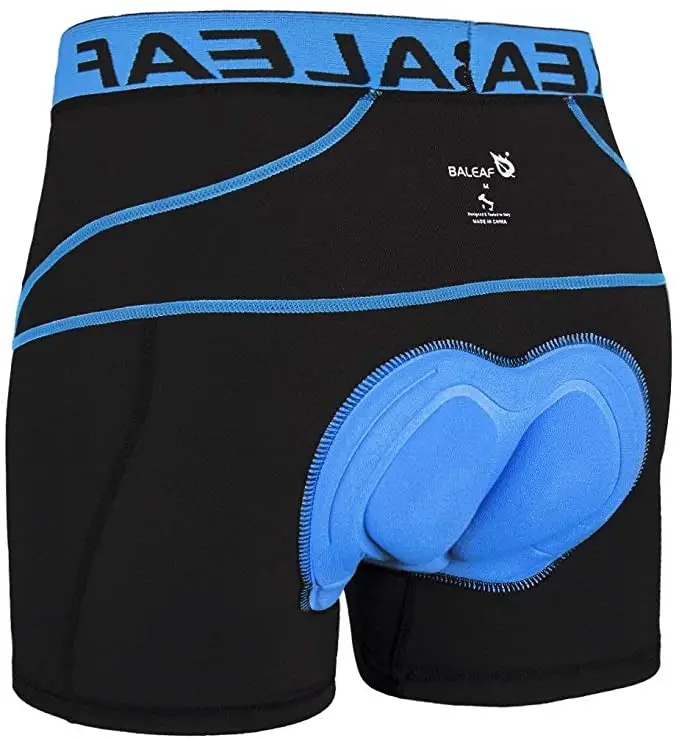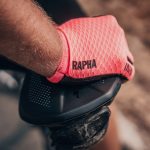Riding trails sans proper cycling shorts often ends in saddle discomfort, chafing issues, and suboptimal bike control. Padded baggy mountain bike shorts protect your backside from abuse enabling longer rides and better technique conquering technical terrain. However, practical considerations around cost, intended use, and personal preferences help determine ideal short features.
Saddle Interface Protection
The number one reason to wear purpose-built padded cycling shorts while mountain biking focuses on shielding your derriere from saddle abuse delivering misery. Even comfy looking stock bike saddles press into soft tissues causing numbness or compartment syndrome over time. Lightweight performance oriented seats with stripped down padding concentrate force across less surface area necessitating extra cush.
Unpadded street clothes lack any barrier between bony sit bones and unyielding saddle shell materials like firm foam or plastic base plates. Experiencing full trail feedback direct to the derrière through thin lycra or denim leads to painful imprint bruising and eventual numbness during longer rides. Dedicated padded liners cushion road vibration and dissipate pressures avoiding short term discomforts.
Over longer durations, the cutouts and reduced padding sections characteristic of high performance saddles also restrict blood circulation resulting in genital numbness or even erectile dysfunction in severe cases. Quality padded shorts maintain fluid pathways protecting delicate nerves. Preserving functionality by guarding your underside with appropriate padding enables enjoying rides longer safely.
Prevent Chafing Injury
In addition to insulating sensitivity from saddle trauma, well designed mountain bike shorts incorporate fabrics enabling unimpeded freedom of movement in multiple riding positions that would otherwise generate severe chafing issues. The abrasive friction rubbing of standard street clothing seam stitching rotating pedals at speed often inflicts severe chafing rashes within just a few miles without fortification.
Synthetic wicking fabrics used in quality bike shorts instead feature flatlock seam construction that smooths transitional edges eliminating friction. Strategic panel shaping caters to discipline specific mobility demands as well. The hallmark rear stretch panel found in downhill and enduro inseams prevents tearing the crotch out clambering aboard bikes through rock gardens and technical trails.
Likewise, cross country and trail riding short designs account for repeated transitional standing pedaling uphill pitches requiring extra front panel patterning enabling freedom torqueing cranks without bunching or restriction. Well designed mountain bike shorts accommodate athletic riding positions and relentless surface changes handing terrain variety during unpredictable marathon adventures without shredding like fast fashion or swimsuits would. Durability protecting against debilitating abrasion makes proper shorts mandatory for serious mountain biking.
Enhanced Bike Control Confidence
High performance mountain bike riding demands deep concentration picking optimal lines attacking technical trail features. Quality padded cycling shorts with strategic friction zones help stabilize body positioning when sending big hits without distraction adjusting clothes compromising commitment mid flight. They become second skin conduit directly translating subtle bike feedback enabling processing nuanced terrain intricacies.
The integrated fit of quality undershorts maintains consistent contact between inner thighs and saddle during transitions fore/aft when absorbing successive bump forces or steep punchy climbing bursts without restrictive bunching typical in boxers or loose gym shorts. Supportive materials stabilize alignment during explosive stand up sprints or extended seated hammer sessions equally well. Wearing true cycling shorts enhances control confidence pushing personal limits precisely balancing bike and body choreography.
Consider shorts with adjustable waist tension straps permitting tuning around individualized preferences dialing in ideal stability translating critical pressure cues from tires and terrain directly. Seamless chamois foam thickness offering the right balance of cushy dampening versus tactility awareness proves essential maintaining fidelity relaying pivotal detail. Symbiotic rider sync maximizes capabilities charging corners and conquering technically demanding trails.
When Padding Proves Optional
Several scenarios exist making padding redundancy unnecessary or even undesirable when mountain biking such as indoor cycling classes, casual neighborhood cruising, budget limitations, or simple personal preference. As with any athletic endeavor, apparel decisions depend heavily on precise application and desired outcomes prioritizing functionality.
Riders strictly sticking to smooth dirt access roads or easy intermediate green circle flow trails may skip padded undershorts avoiding the purchase cost unless planning eventual progression into more radical terrain. Urban bike park dirt jump lines and some pump track setups likewise discourage padded liners potentially snagging baggy outer short ventilation zippers on saddle grunts. However the protection still generally proves beneficial absorbing vibration when learning basic skills before developing sufficient bike control mastery cushioning landings using proper techniques alone.
For indoor cycling fanatics never leaving the trainer torture chamber, plain workout clothes suffice since you won’t experience saddle pummeling the same way stationary. Traversing neighborhoods gingerly or hauling kids in tow skips rationalizing expensive cycling kit for short duration mellow rides. Ultimately padding necessity correlates closely with bikes and routes taken. Enthusiasts committed getting rad on burly singletrack almost universally praise quality chamois inclusion taking hits in stride mile after mile.
Balancing Cost, Durability, and Features
Myriad combinations of materials, construction methods, and designs found across the cycling short product spectrum offers consumers tremendous choice. But wide price variances reaching $300+ for some premium options confuse making cost versus value assessments difficult during comparison. Determining ideal shorts balancing performance, longevity, and expense depends greatly on riding style and frequency. Prioritize critical elements like quality padding, durable fabrics, ventilation, and storage based on how hard you’ll use them.
Weekend casual pedalers stick to basic styles costing under $75 offering decent padding coupled with rugged fabrics resisting tearing when eventually pushing personal progression into more challenging terrain. Mid-range offerings around $125 deliver reliable mile eating longevity with better moisture wicking undershorts lasting years of moderate use with care. Meanwhile $200+ premium shorts showcase top tier proprietary padding, articulated patterns, and lightweight fabrics catering specifically to aggressive riders.
Try multiple liner and short fits selecting optimum personal comfort fit facilitating decisively reacting dynamic trail situations without distraction. Dialing gear perfectly attuned to your body, bike, and home terrain unleashes riding potentials reaching new heights. Identify chamois and fabrics complementing individual physiology eliminating discomforts hampering enjoyment long rides or races demand. Perfect shorter selection enables focusing attention on precisely balancing bike and body advancing skills.
In conclusion, wearing quality padded cycling shorts while regularly mountain biking protects sensitive tissues, avoids severe chafing, stabilizes optimal bike interface, and builds riding confidence elevating technical capabilities – all compelling benefits justifying their purchase by enthusiasts riding semi-regularly or beyond casual hobby status. Consider terrain variability and riding frequency balancing protective necessity against budget constraints when investing. But for radical riders committed charging hardest on the gnarliest trails available, properly designed MTB shorts deliver safety, resilience, control and comfort mile after grueling mile subverting pain and hesitation holding back personal progression goals.



